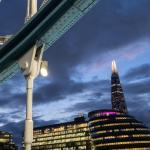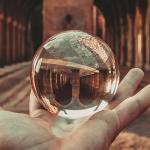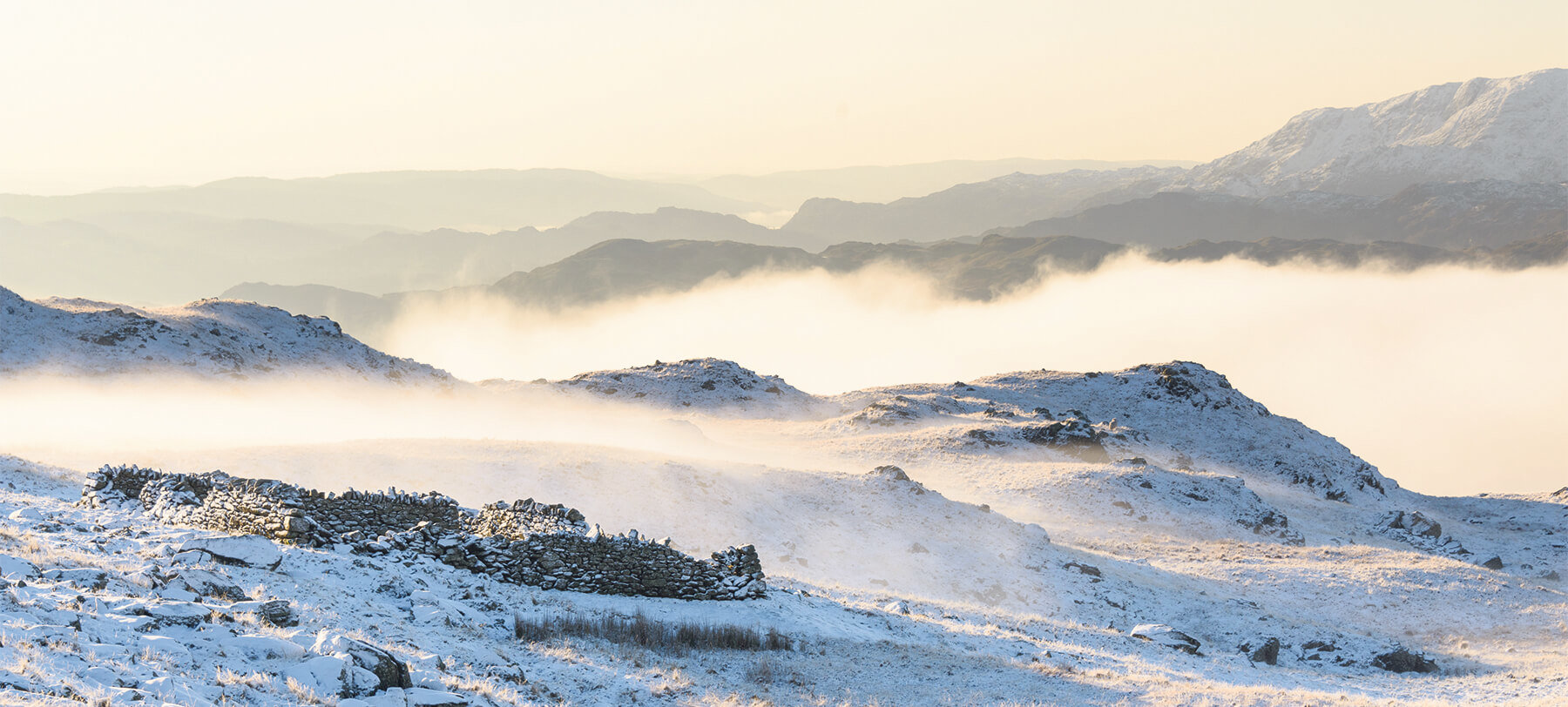
The secrets to perfect winter landscapes
11 minute read
Winter landscapes can offer some amazing views, even if you’re not blessed with snow and ice. But in terms of technique, it’s more about adapting to the conditions and staying safe and comfortable, than altering the way you shoot…
You inch open your front door a crack and freezing air rushes into the house. It’s like a slap in the face; like the winter weather is actually trying to push you back indoors and back to your warm and cosy bed.
It’s pitch-black out there, and the dawn is still hours away. It takes five minutes just to scrape the ice off your car and climbing in is as comforting as sitting in a fridge.
So why do it? Why are winter mornings so beloved by landscape photographers?
“The first time I climbed Helvellyn in the winter,” says John Gravett, a professional landscape photographer and photographic tutor, “I set off in the dark, and as I climbed, I was walking through thick cloud. Sunrise was just a non-event; but then the clouds cleared, leaving me with a wonderful view across a cloud inversion and a very rare Brocken spectre. I think that was the time I fell in love with shooting in the winter.”
A Brocken spectre is a trick of the light and cloud, which affects depth perception, making the observer’s shadow appear hugely magnified as it’s cast against mist below your position. With the sun at your back to cause the shadow, diffraction adds mesmerising rainbows around the shape.
It’s a rare, beautiful event that needs just the right conditions to appear; but most importantly, it needs you to be there – no one has ever seen a Brocken spectre while putting their alarm clock on snooze.
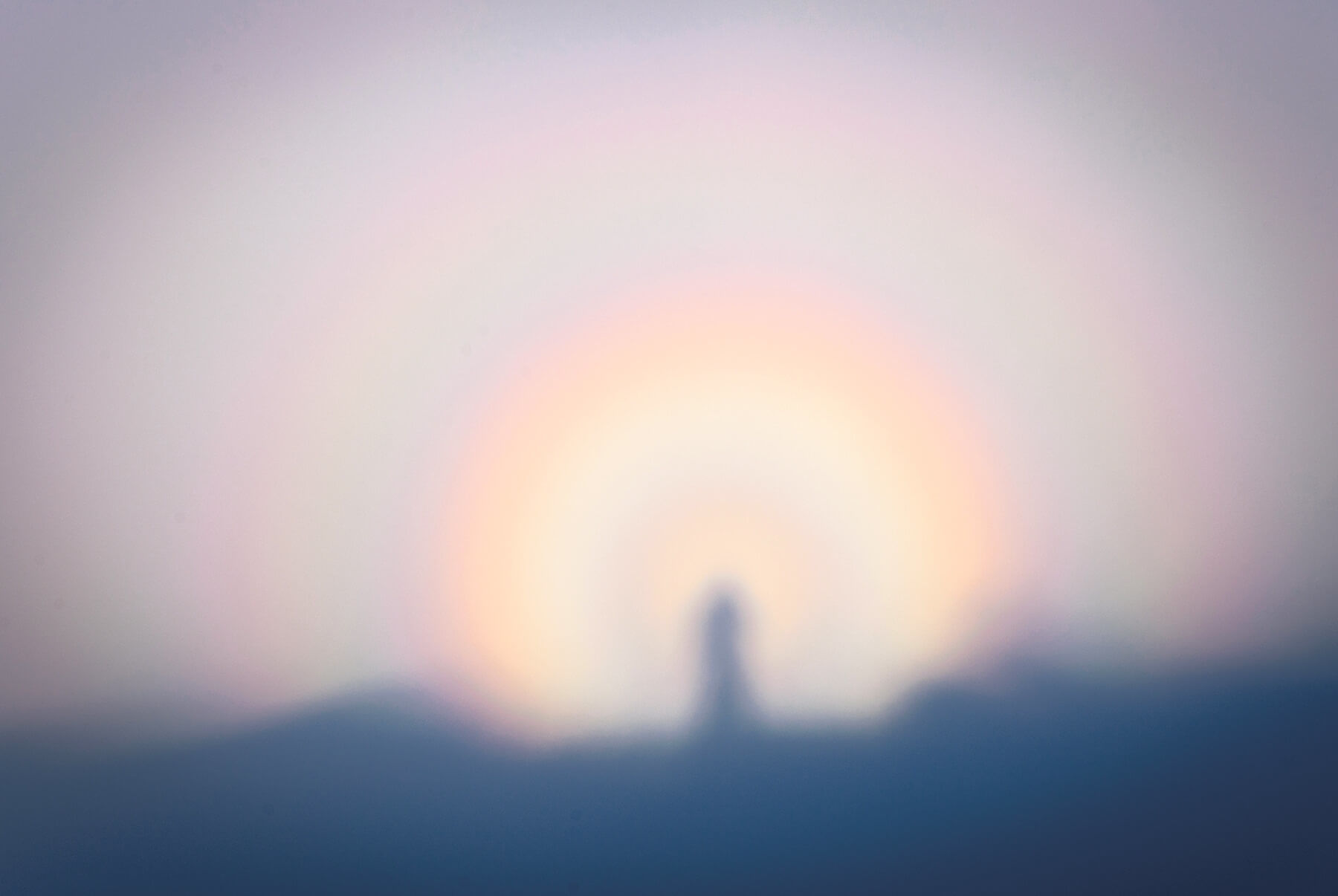
In fact, this is true of any great winter landscape; blanketed in white or glittering with frost, it takes a genuine effort to get out into it. But do it – actually take charge of your photography – and the rewards are sure to pay off tenfold.
John, who has been teaching landscape photography workshops for almost 20 years via Lakeland Photographic Holidays has also written multiple books and articles on the subject, so he’s perfectly placed to offer insights on the subject of winter shooting. His Lake District home is also surrounded by some of the UK’s most compelling winter scenery (well, to be fair, that’s true in any season).
According to John, the reasons for making that extra effort go on and on, from the dynamic winter weather to the solitude that those conditions can allow. “I’ve been at the top of Skiddaw in a 70mph wind, being buffeted yet getting wonderful, dramatic images of the clouds, or up Grisedale Pike, where the clouds and the snow merged into one in the middle distance. Seeing a snow-covered dry stone wall disappearing into the murk encapsulated the feeling of total solitude. Equally wonderful is to stand next to a lake, with ice patterns at its margins, and enjoy the wonderfully clear light.”
John adds that winter walking is actually a big part of the enjoyment, too. “There is far more effort to the trekking, especially when you’re going high. Carrying crampons, an ice axe, clothing and your camera gear… At the end of any day in the winter, it can leave you feeling worn out – but totally exhilarated.”
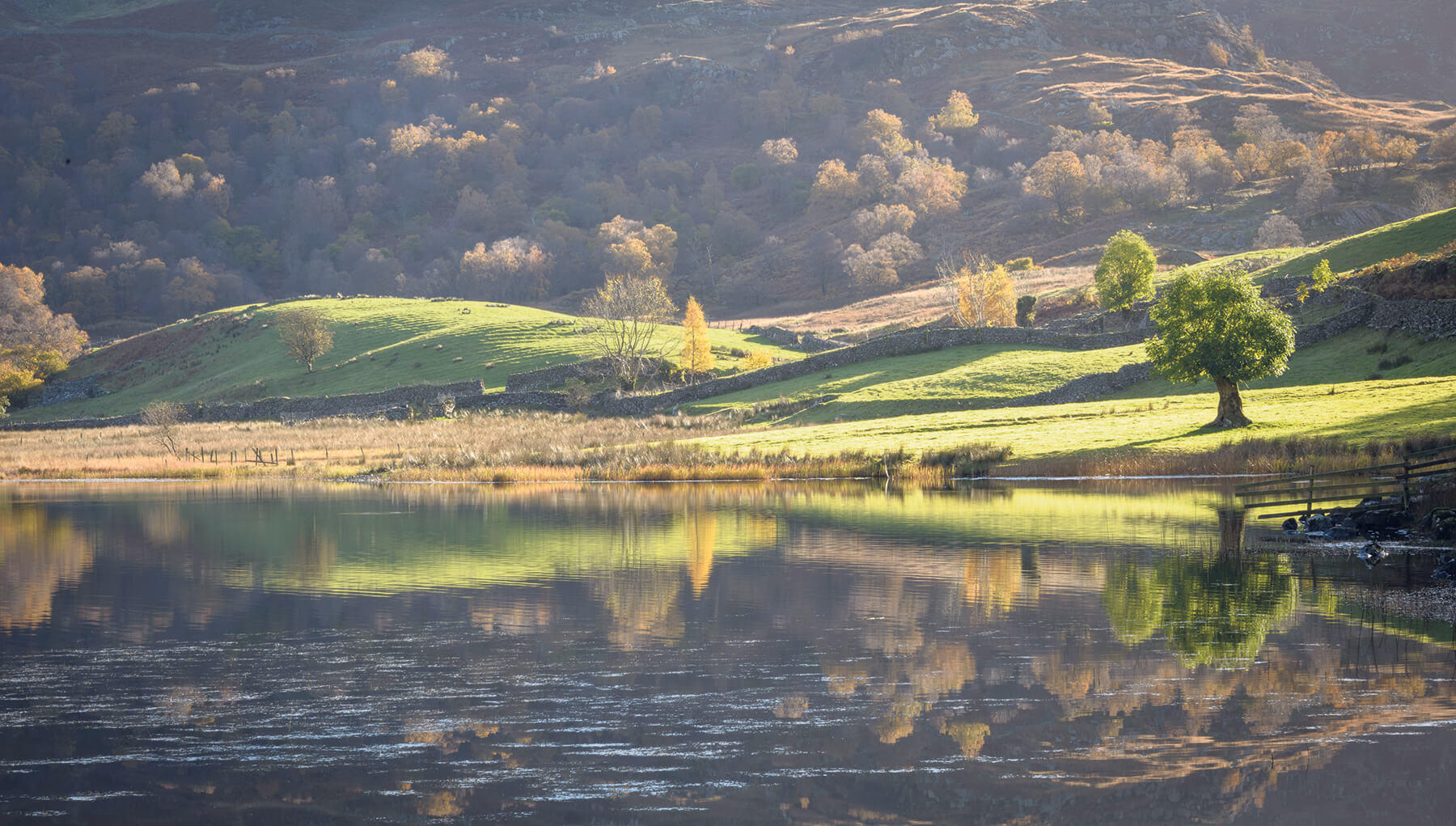
Benefits of the weather
Of course, winter needn’t be so hard on your sleep, as the simplest benefit of the season is in the shortened hours of daylight; there’s so much more good light at accessible times of the day. The sun stays lower, giving the warm glancing light that landscapers love, and on cold, dry days views are often at their clearest.
“Sunrise in the Lake District at this time of year is almost 8.30am,” says John, “and by the time mist is forming over lakes, it can be anything from 9am to 10.30am, so it’s hardly early. But climbing higher and longer, and when daylight is so short (sunset can be as early as 3.30pm), you still need to get out early to make the most of it. It’s never a chore though; to see the sunrise over clouds from halfway up a mountain is so much better than sitting on the morning commuter train into King’s Cross.”
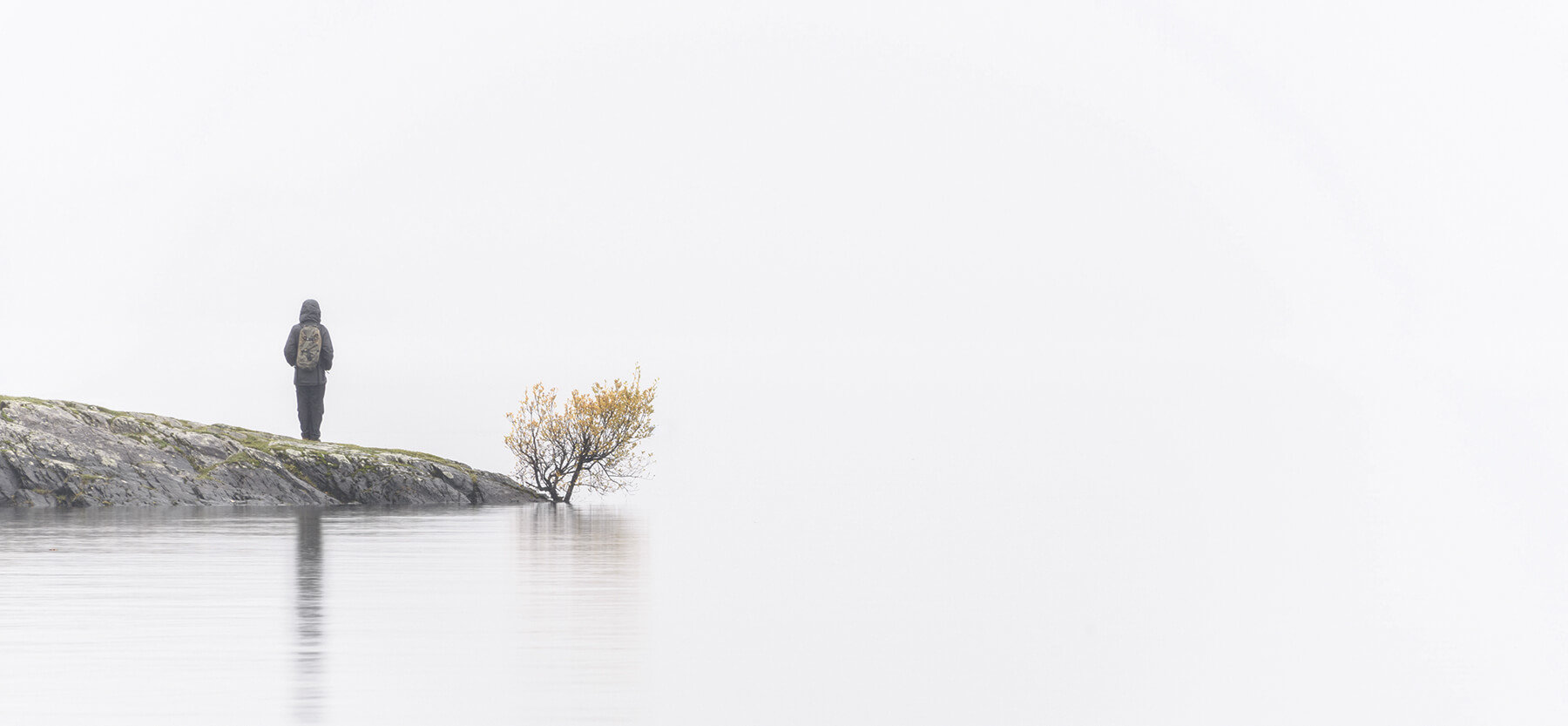
Simply scene
Winter weather can also simplify a scene in ways that nothing else can, as John points out. “The weather always changes the way you look for pictures, from one season, one day, or even one hour to the next. Coverings of snow or mist not only simplify your scenes in terms of highlighting certain details, but also do it tonally.”
The tonality of winter is worth exploring further, because as you take in a reduced colour palette and often lower contrast if you’re shooting in misty conditions, scenes look less busy and become more relaxing. This means that, even where there’s no snow around, don’t neglect shooting in the gloomy weather that we often face in the UK – it’s really just an opportunity to see a location in a different way.
“I always say there’s really no such thing as bad weather,” explains John, “there are only different types of lighting, which create different atmospheres and moods. Rain and fog can create a fabulous feeling of recession and depth in a landscape, allowing foreground elements to stand out from a high-key, pastel-coloured background.”
In this way, the changing weather reveals new opportunities in places you’ve shot before, so try to always keep a log of spots that might work well in an app like Google Maps, or by doing it the old-fashioned way. “There are some places I know, perhaps with isolated trees or dry stone walls,” says John, “that work superbly when covered in snow or by mist.
“Also, remember it’s not all about the bigger views in winter; I’m always on the lookout for ice patterns and details, which you can find in something as simple as a frozen puddle. Those patterns can be just as interesting as a panoramic view, as can a few delicate blades of grass poking from the snow.”
Mist and frost can be idyllic, but not always for your camera, and when you’re shooting in those conditions, or snow-covered ground, remember that your metering system can be fooled into underexposing the scene; use a little positive exposure compensation or shoot in manual mode for better control, and always assess the image histogram in playback to make sure your exposure is good – it’s better to check than regret it. If you’re ever in doubt, make sure you shoot in Raw mode.

Winter gear
Beyond making sure you’re warm and safe in the potentially dangerous winter environment, winter landscapes don’t see a great change in the actual kit required to shoot them from any other time of the year. Sure, you might need to think ahead in terms of the rain, with an emergency cover at the ready (even a clean bin liner can do the job at a push), but in terms of lenses and filters, there’s not much difference between packing a winter bag and your normal gear.
Weight can be a concern though, and according to John,“if I’m climbing high into the Fells, I will cut my lenses down to a minimum, thanks to the extra clothing and food I need to carry. I’ll also take a mapping GPS and a head torch with me. And I always make space in my pack for a hot drink – a thermos of hot tea is a godsend after a few hours in the cold!”
“Often I go out with just my Nikon D800 and one lens; sometimes I take my Nikon 16-35mm, and sometimes my favourite ‘travel’ lens, the Nikon 28-300mm.” Such all-in-one options can certainly offer everything you need for a successful day’s shooting, and concentrating on the telephoto end can be especially effective in winter, allowing you to isolate misty details in the landscape, or backlit areas where the sun is broken and only lighting small parts of a hillside or valley.
“I’ll always have a set of Lee filters along with the Universal bellows hood with me, including grads, a polariser and often a selection of Stoppers (Little, Big or Super) although the latter doesn’t come up to the high Fells with me too often.”
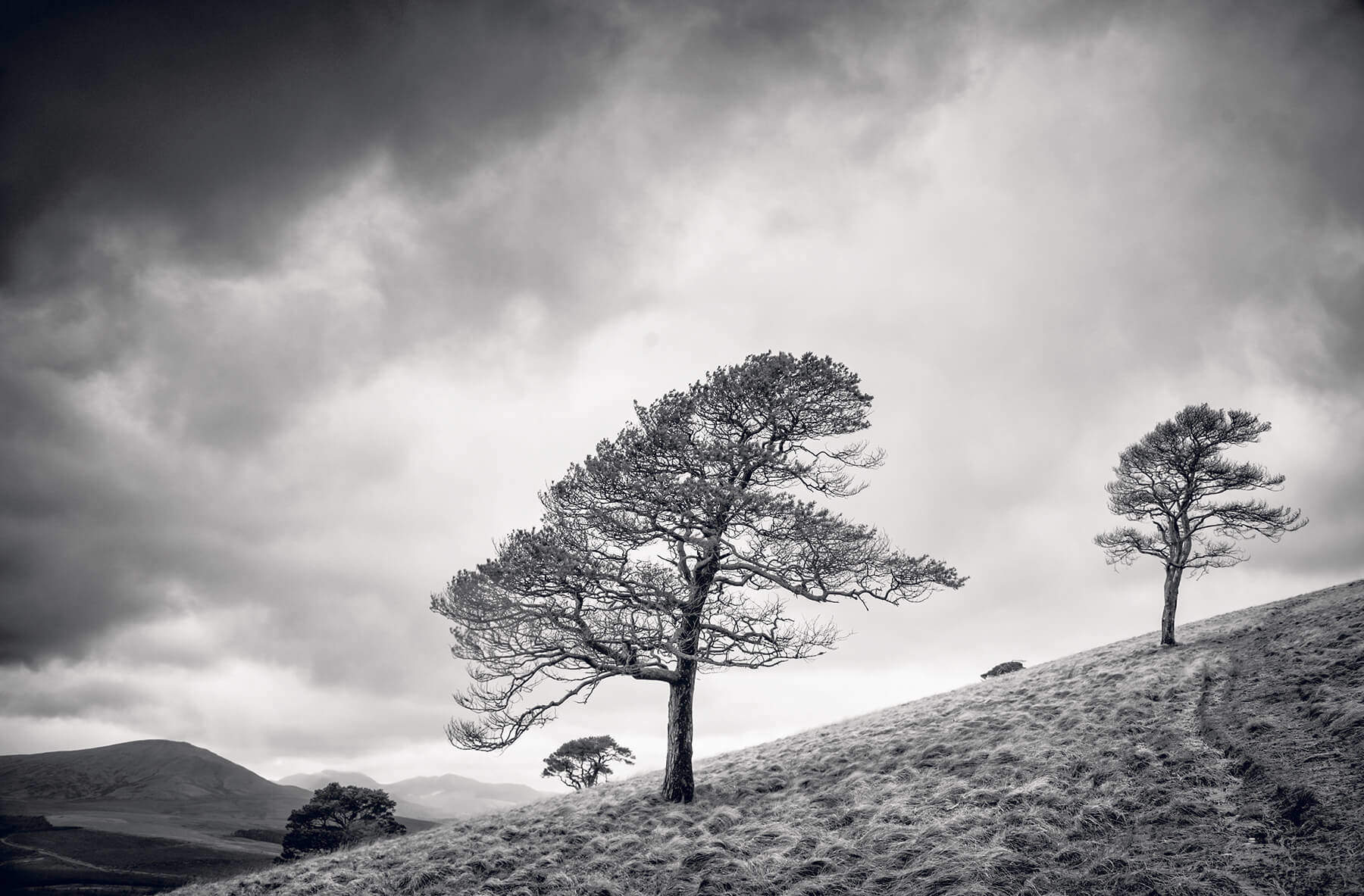
For the same reasons of weight, he switches between a Gitzo Systematic tripod around the Lakes, “or a smaller, lighter one that fits in my rucksack for the higher Fells.” These will be carbon-fibre models which are much warmer to the touch than aluminium, but gloves are still vital. Try wearing a thin liner inside a warmer glove for the best mix of protection and operability. It’s also well worth leaving your camera in a cooler room than the rest of the house before you head out, to prevent condensation problems, and doing the same when you return to the warm.
“One of the most important parts of winter shooting is spare batteries,” says John. “They tend to run flat faster in the cold. I usually carry two or three spares (though I’ve never needed more than one) and I don’t use live view as much, as that drains them faster. I keep the spares inside my outer clothing, where body heat prevents them running down.”
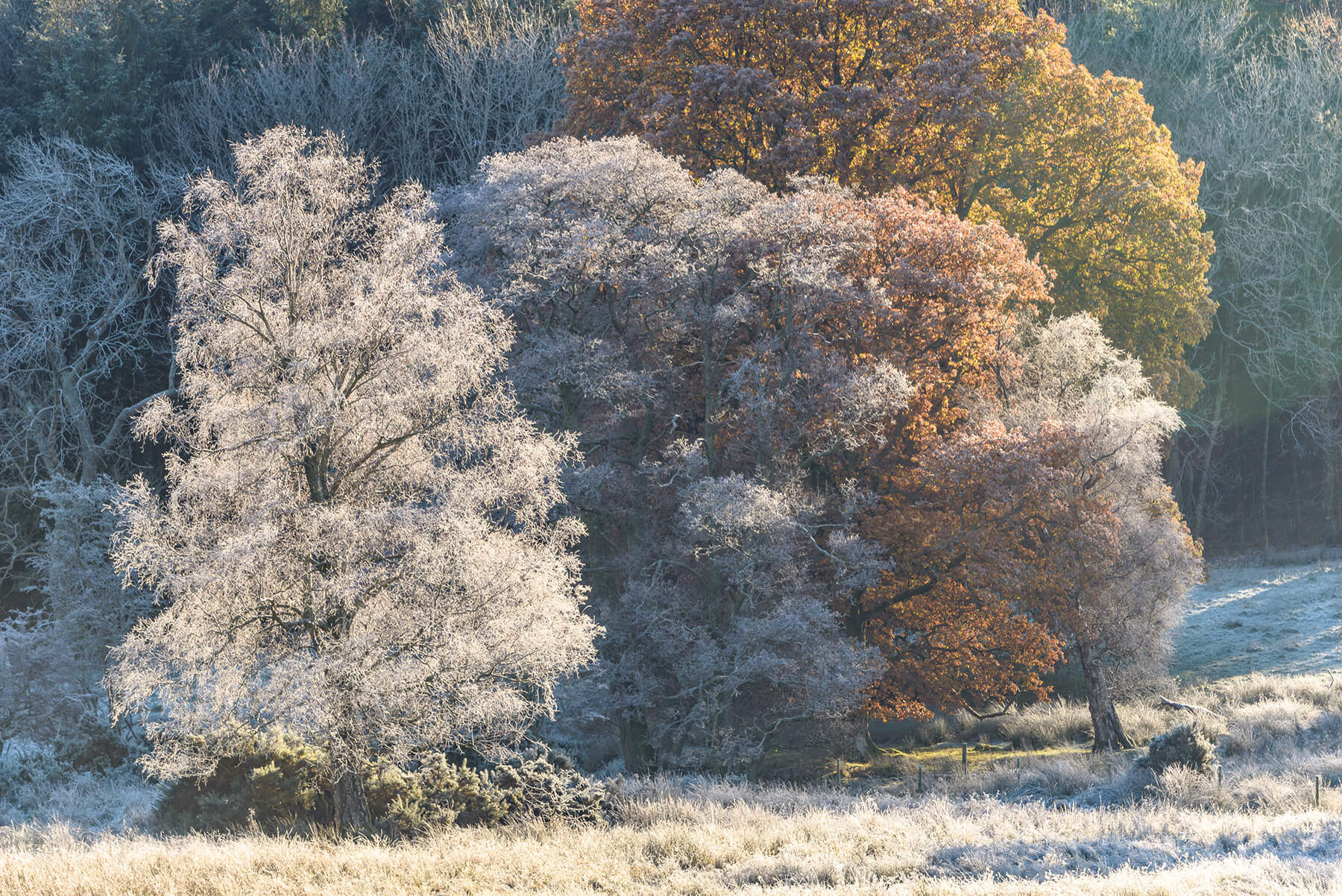
Be careful out there
As a parting tip, John is quick to offer some realism about facing winter conditions. “I always stress that maintaining body warmth is vital, through layering of clothing, as standing around taking photographs is very different from going on a 12-mile hike. If there’s lots of snow or ice, I also recommend some form of walking aid, like Kahtoola Microspikes or overstuds. Proper clothing and equipment is vital, and really should take priority over any photographic gear. I’d certainly leave a couple of lenses behind and pack a set of crampons if I was climbing high as personal safety is most important.” It’s always tempting, he says, to stay out a little longer than you intended, but “getting a photographic masterpiece can happen another day, so never put yourself in danger for a photograph!”
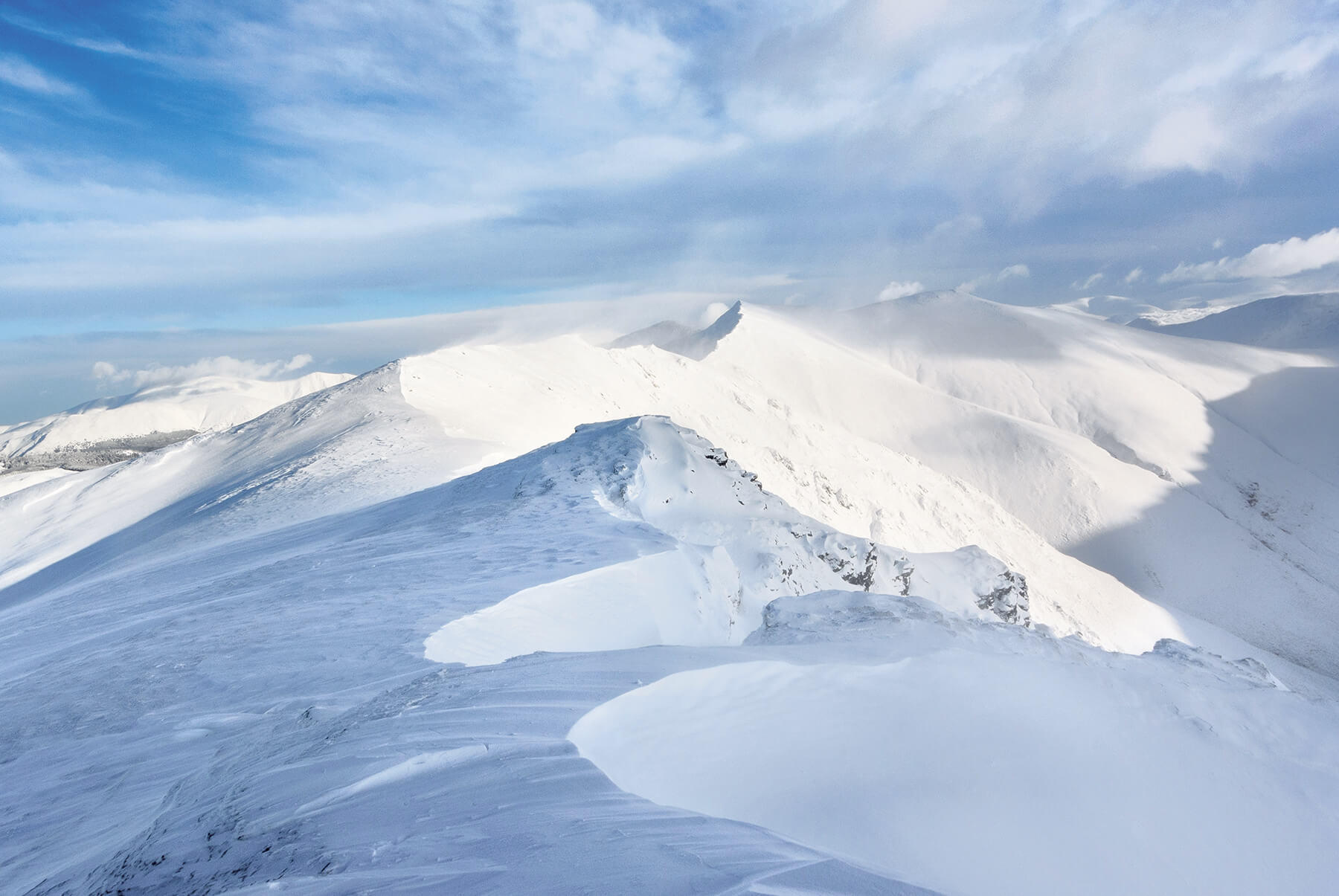
Lakeland learning
Owned and operated by John Gravett, Lakeland Photographic Holidays (LPH) has been offering residential photo courses since 1999. Based in Braithwaite, near Keswick, on LPH’s courses you’ll find yourself right in the middle of one of the UK’s most beautiful landscapes.
Lakeland provides full board, licensed accommodation in comfortable en-suite rooms, and while many excursions are within the Lake District national park itself, also included are trips to the nearby Solway coast. Overseas trips are also available, with some exciting winter-flavoured excursions planned including shooting the Northern Lights in Iceland.
Workshops are varied in style, so there’s plenty to suit a range of interests, including dedicated black & white courses and Photoshop and Lightroom training. Excursions are also tailored to the amount of walking you want to undertake, so you can stick to the shorelines or investigate the Fells if you prefer.
When it comes to capturing those quintessential snow-covered views, according to John, “the best snow in the Lake District is usually late January through to March or even later in the year.” So if you want a taste of the white stuff, get booking now.
For more information, please visit the Lakeland Photographic Holidays website.
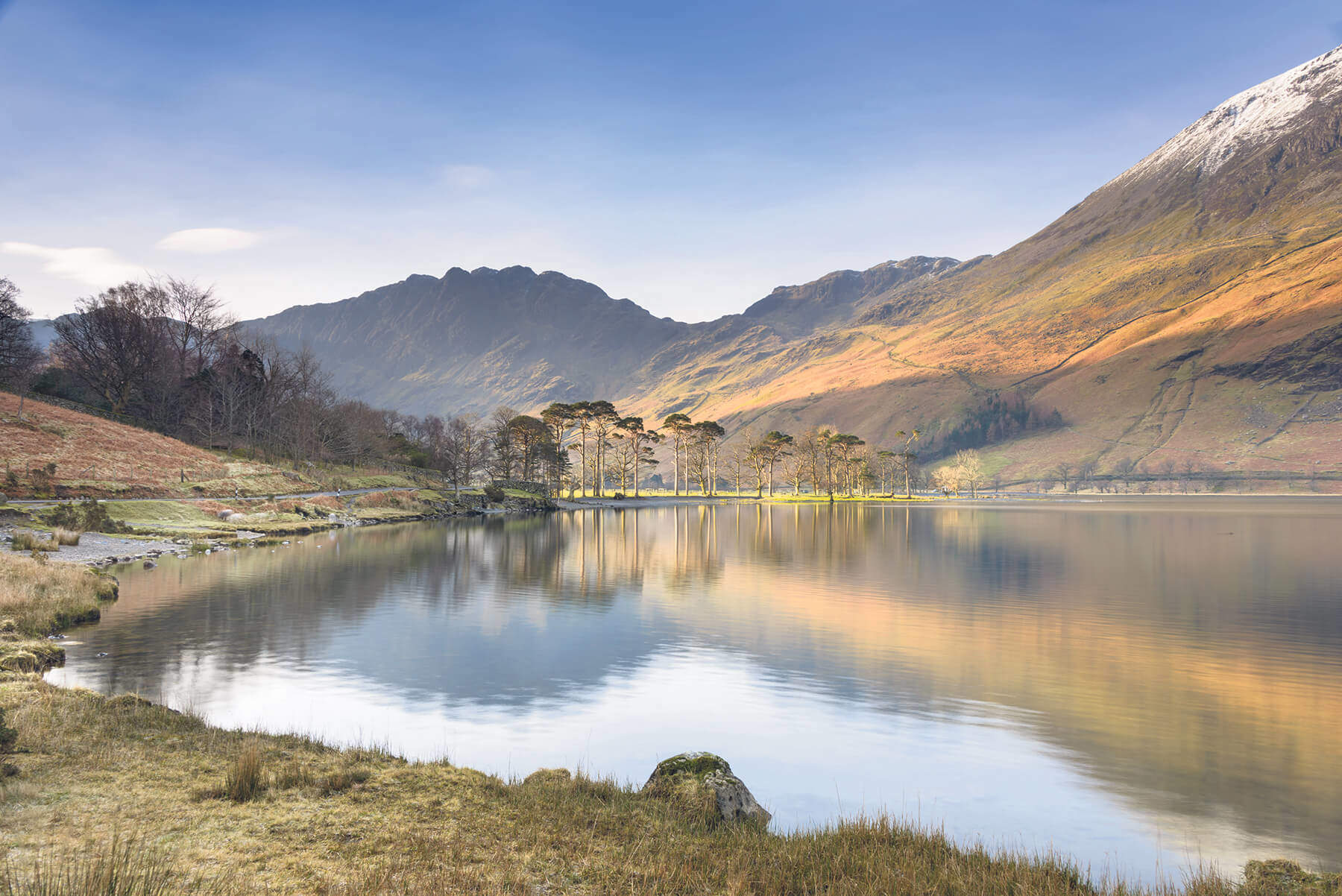
For more tips, techniques and guides, take a look at our Inspiration section.
Don’t forget to sign up to receive our newsletter below, to get notified of the new issue, exclusive offers and competitions.

